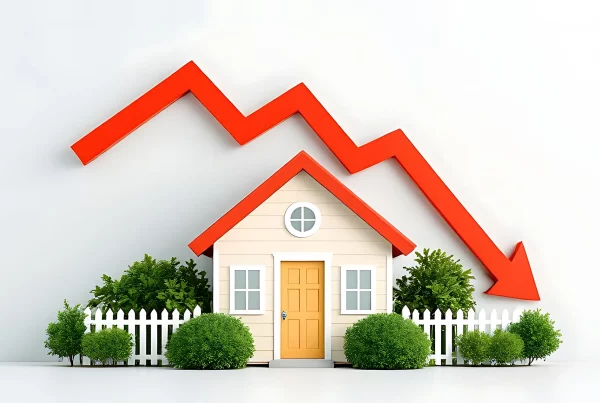Homeowners often contemplate when to refinance mortgages; obviously, securing a lower interest rate is usually the best reason to refinance. With interest rates rising yet again, it’s no surprise that many people are considering the wisdom of refinancing their mortgage. While the historical rule of thumb is that refinancing is a great decision as long as the new interest rate is lower than 2% of the current mortgage, even a 1% savings can reap a significant financial benefit.
That’s because a lower interest rate equates to long-term savings throughout the life of the loan, boosting the speed at which borrowers build equity and possibly spend less on monthly payments. Alternatively, a few other scenarios make refinancing a sensible choice. The reverse is true, too – certain motivating factors could likely make a refinance a lousy decision.
Let’s dive in and understand the realm of mortgages and decide when to refinance mortgages and why to refinance.
To fully understand when to refinance mortgages, we must first explain what a mortgage refinance is. When homeowners refinance their loans, they pay off the existing current loan and replace it with a new loan amount. Typically, a refinance costs between 2 and 6% of the loan principal and usually requires an appraisal, title search, and application fees.
Securing a lower interest rate
The primary purpose of refinancing is typically to secure a lower interest rate. However, there is a secondary benefit to homeowners who have gained significant home equity since the origination of the primary loan, and that is the ability for homeowners to access home equity. Homeowners should think carefully about their motivations for refinancing and partner with a lender specializing in making real estate funding advantageous to the homeowner.
Shortening the loan term – Markets with falling interest rates can allow homeowners to refinance for a shorter loan term without dramatically changing their monthly payments. There are several sensible reasons a homeowner may investigate a refinance. In addition to a lower interest rate, they may be motivated to shorten their mortgage term. Additionally, say a homeowner began with a 30-year loan and has lived in the home for 20 years. Twenty years of mortgage payments and current property value should equate to significant home equity. Making this situation is ideal for shortening the loan term through a refinance to expedite a mortgage-free future.
Refinancing allows homeowners to convert from one kind of loan to another.
Converting Loans.
Homeowners with an adjustable-rate mortgage may be interested in converting it to a fixed-rate loan or vice versa. There are several scenarios in which converting the loan makes financial sense. While fixed-rate mortgages are often the safest bet, there are situations in which an adjustable-rate mortgage can save the borrower serious money. Considering the popularity of Jumbo loans and fix and flip properties, short-term 15-year loans with adjustable rates allow borrowers to leverage the property, renovate, and sell quickly.
Rate and Term Refinancing.
Occasionally, a homebuyer has difficulty making their monthly payment. No one plans for this, but it happens. In this scenario, the borrower may have a shorter-term, 15-year loan. Rate and term refinance options offer loans to extend the amount of time the borrower has to pay from 15 to 30 years. By extending the length of the loan, this refinancing option can provide a much better term refinance loan amount.
One simple loan adjustment like a rate and term refinance can make the difference between losing a home due to loan default and providing a realistic monthly mortgage payment. Sure, the homeowner will be paying for a longer term, but their quality of life will significantly improve due to the monthly savings from the lower monthly mortgage payment.
Refinancing to ditch private mortgage insurance premiums (PMI).
Depending on the type of mortgage borrowers choose, many loans, such as conventional loans and FHA loans, typically require borrowers to pay a 20% down payment upfront. If a borrower cannot pay 20% upfront, they will be required to carry private mortgage insurance to protect the lender in the case of a loan default. By using a refinance calculator, borrowers can predict the cost of a new loan.
Tapping equity.
From home renovations to college educations, there are plenty of reasons homeowners may consider refinancing as a means of accessing their home’s equity funds to improve their financial situation. Understanding when to refinance mortgages is essential. Many homeowners take advantage of their home value and use a cash-out refinance to take dream vacations or even purchase vacation properties or second homes. In some cases, borrowers add value with a renovation while enjoying a lower interest rate with the new mortgage loan.
Obviously, this is the ideal situation for refinancing and is very advisable. A well-versed lender will help borrowers compare the available loan options and even explain tax-deductible interest opportunities while optimizing lending to its fullest potential. Although this all sounds idealistic, the fact remains – refinancing adds years of payments, and streamlining the ultimate loan payoff is typically the best option. One of the most popular loans for tapping equity is a home equity line of credit (HELOC).
HELOC loans allow homeowners to use existing home equity and make monthly payments to repay the loan. They are popular refi loans because they offer low mortgage interest rates, and many homeowners use the funds for home improvements, increasing home value. Obtaining a credit card for a home improvement project almost always rings in much higher interest payments than refinance rates offer. HELOC loans provide ideal financing solutions rather than higher-rate loans.
Consolidating debt.
Life is expensive. There is no need to debate that fact. often, mortgage refinancing may seem like a tidy way to pay down debt elsewhere; however, refinancing a property to consolidate other old debt isn’t always the best financial decision. When to refinance mortgages often intersects with discussions about credit scores, a factor highlighted by lenders seeking to secure favorable terms. When a borrower has created a significant amount of higher interest rate debts in the past with purchases, like credit cards and high personal finance risks, their credit report will reflect those risks.
Consequently, lenders and underwriters consider the probability of the borrower repeating the scenario, and loan approval and interest rates are affected. Alternatively, financially responsible homeowners can tap into lower interest rates because of their financial stability. Frequently, with children aging out of their homes and college tuition beginning to accumulate, homeowners refinance existing mortgages and access lower-interest loans. Often, the lower rates offered through home equity loans rather than student loans offer much lower monthly payment options. In turn, this makes the addition of a new monthly mortgage payment through a refinance a better financial decision exponentially.
The Takeaway
Timing is everything, and knowing when to refinance a mortgage becomes crucial when homeowners engage with mortgage lenders to explore potential interest rate benefits. There are many reasons to refinance a mortgage loan, and some of them are financially savvy. Remember that 2 to 6% paid on principal will take years to recoup with the savings on the lowered interest rate, so a refinance likely won’t make financial sense if you’re planning on moving in a few years.
If the goal is reducing debt, building equity, and working toward owning your home free and clear, consider the loan’s closing costs to calculate the break-even point, which is the point that the savings from a lower interest rate exceed the costs of refinancing the new loan. Experimenting with a refinance calculator can help determine the break-even point of a loan. Additionally, amortization calculators are fun tools for exploring how different loan terms affect your payments and the amount you’ll owe in interest.
Let’s connect you with an experienced lender today who can explain when to refinance mortgages to optimize your borrowing power, set you up with the best mortgage, and get you on the way to achieving your financial goals!
The steps are simple:
1. Schedule a Call: An experienced loan officer can discuss your lending needs and guide you through the possibilities.
2. Get Approved: We’ll help you through the mortgage application process and facilitate the steps for approval.
3. Exhale: Put your feet up and feel secure knowing you made the best decisions about your home loan.
With proper guidance, you can get your first home, accommodate your growing family, and start that renovation project—whatever goal is on the horizon. An alliance with Mortgage Insiders will give you the confidence to know that your mortgage loan is setting you up for financial success. Mortgage Insiders offers today’s latest financial news and mortgage trends. Check out their channel for current events.





